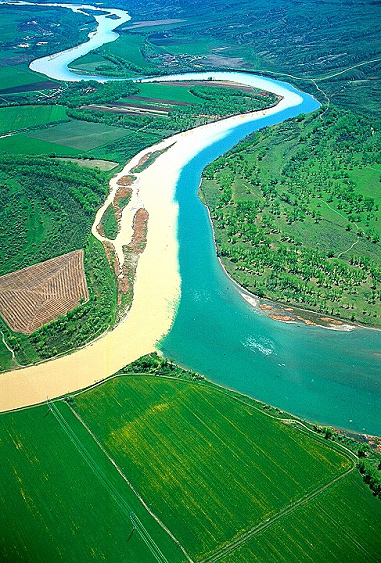We nooned it,” wrote Lewis on 8 May 1805, “just above the entrance of a large river which disembogues on the Lard. Side”—he meant the starboard side. He “took the advantage of this leasure moment and examined the river about 3 miles.” Its water, he observed, “possesses a peculiar whitness, being about the color of a cup of tea with the admixture of a tablespoonful of milk.” Thus, he concluded, “from the colour of it’s water we called it Milk river.” He wondered whether this might be the river the Hidatsas had called “the river which scoalds at all others.” The meaning of the Hidatsas’ name for it was less obvious than the one Lewis gave it.
They couldn’t be certain, but Clark thought he saw smoke and Indian tepees in the distance, up the Milk. “We do not wish to see those gentlemen just now,” said Lewis, “as we presume they would most probably be the Assinniboins [Assiniboine] and might be troublesome to us.” The trouble never materialized.
The captains speculated that, judging from its size at the mouth, the Milk might begin far enough to the north to parallel the Saskatchewan River. If so, it might intersect with the line that had been agreed upon in the treaty following the American Revolutionary War, at 49°37′ north latitude, which would add a considerable amount of land to the Louisiana Purchase of 1803. He never had the time to find out.
See also The Milk River.
From Discovering Lewis & Clark from the Air
Photography by Jim Wark
Text by Joseph Mussulman
Reproduced by permission of Mountain Press

